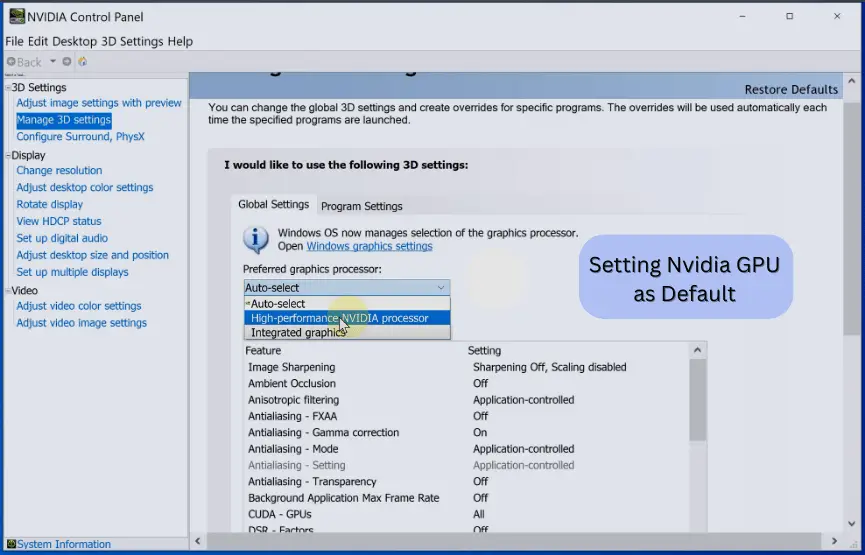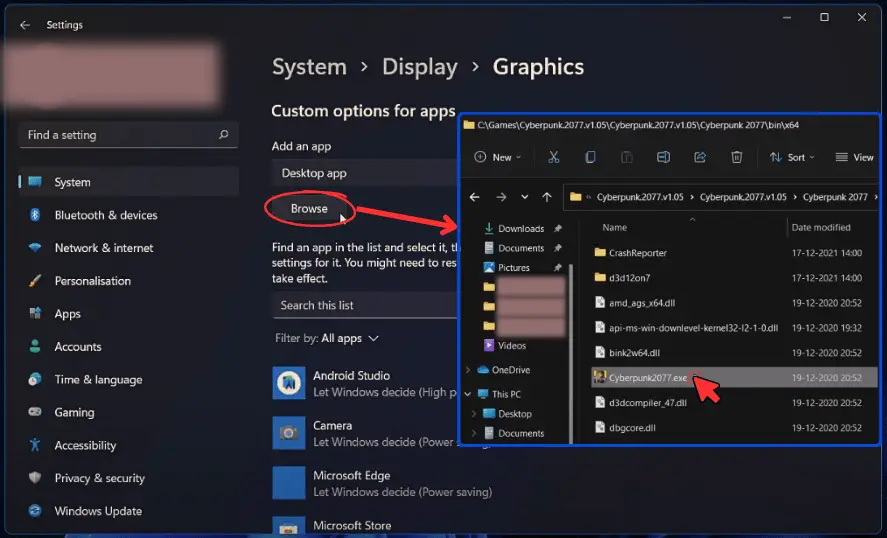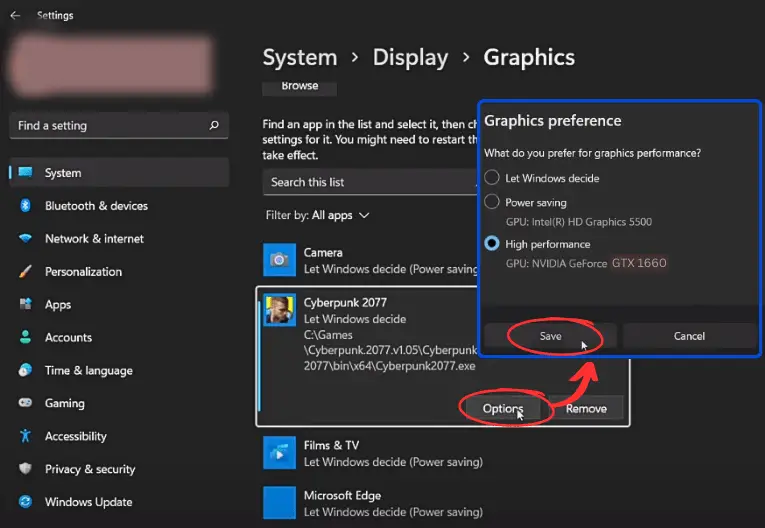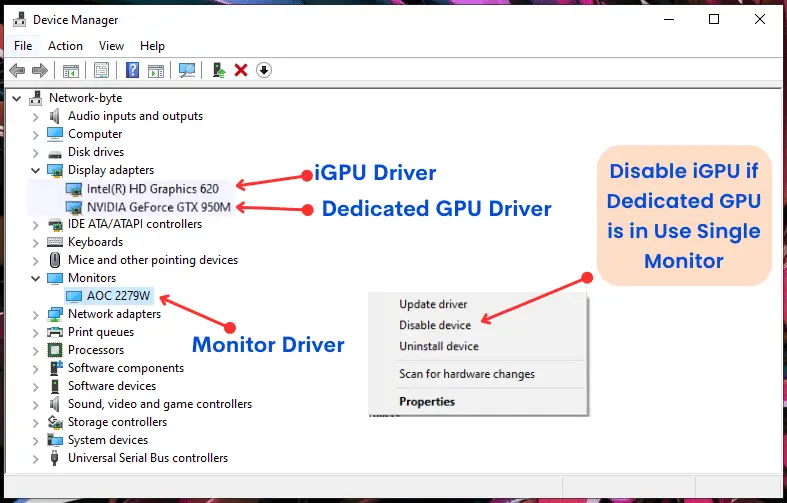Can you Disable Intel UHD or Iris Xe graphics & Use Nvidia?
If you have two GPUs on your computer, 1st built-in (usually Intel or Vega) and 2nd discrete (Nvidia), and want to make your computer work with the Nvidia GPU instead of using the integrated graphics that incorporates. Here is a very simple tutorial in this post.
Can you Disable Intel UHD or Iris Xe graphics to Use Nvidia GPU?
As per the rule, the discrete graphics card should be automatically used when required, like in gaming and graphics work (the rest of the time, to save battery power, the integrated GPU should work).
But this does not always happen, and some games run on the integrated GPU – as a result, you see slowdowns, lags, delays, etc. Let’s explain how to disable Intel graphics and use a dedicated one.
Nvidia Optimus Manages Nvidia and Intel Graphics cards Automatically
NVIDIA’s Optimus technology perfectly handles a high-performance Nvidia graphics card with the one integrated into the Intel CPU chip (Intel UHD/Iris Xe).
This technology is responsible for managing both cards in the best way; when we are going to play or use an application that benefits from a powerful GPU, the system will use the full power of the dedicated graphics card.
On the other hand, when doing simple tasks such as browsing, watching movies or writing a Word document, intelligently switches to the integrated graphics card to reduce power consumption and improve battery life.
This sounds great, but it may not work correctly sometimes and prevents us from using the high-performance graphics card in a demanding application.
Other reasons to always use the discrete Nvidia GPU:
- Some games may not work as expected with Optimus, and using only the dedicated graphics card can solve these problems.
- In some cases, using only the Nvidia GPU like of GTX or RTX series can result in better performance than when using Optimus.
- If you use an external monitor, setting your computer to always use the dedicated graphics card can solve some display issues.
How to Set your Computer Always to use the Discrete Nvidia GPU
To avoid the above situation, we can force the system to use only the dedicated Nvidia GPU instead of the integrated one. To do so, the first thing we must do is go to the Nvidia graphics driver control panel.
Right-click anywhere on the desktop screen. In the pop-up context menu, you should see the settings “NVIDIA Control Panel.” open this setting.
Next, on the left, you select “3D settings” and then “Manage 3D settings”. Now on the right side, you will see an option of “Preferred Graphics Processor” and set it to a “High-Performance NVIDIA Processor.” in your case, maybe it is selected to auto or integrated, then click ‘apply’ to save the settings.

With this, the Nvidia graphics card will be in charge of doing all the work from now on, which will improve your laptop’s performance while reducing the battery duration.
Setting Default for Apps in Settings
This method will work for both Nvidia card as well as AMD’s discrete GPU. For this, go to Windows’ settings: press the Windows + I keys simultaneously. Now, navigate to System> Display > Graphics/Graphics Settings.
An option available to you under the “Custom options for app“ will show up; now click on the “Browse” button and browse through your System’s directories (usually in C:\Program Files) until you reach the application or game to add for which you want to configure graphics card.

Once done, click on the newly added app’s icon in the list below and select “Options” to set its graphics preference as High-performance. In my case Cyberpunk.exe, you can change this for any other apps as needed.

This will ensure that the specified application always runs with your preferred graphics card, regardless of what Windows or the app itself might choose otherwise.
Disabling Intel Graphics
After following the above steps, in order to completely eliminate any interference from your integrated graphics card, you can disable it completely. This will force all the graphical tasks to be handled by your dedicated graphics card.
To do this, go to Device Manager (press the Windows + X keys together and select Device Manager). Look for the “Display adapters” on the list and expand it. Right-click on the Intel graphics card (it may have a slightly different name for some users) and select “Disable device“.

Once done, you can restart your laptop to see if it has made any changes in performance. Note that this will permanently disable your integrated graphics card, which can lead to issues if you do not have a dedicated graphics card.
Deactivating the integrated graphics card allows the entire graphics workload to fall on your dedicated card. This translates into higher performance, high VRAM usage but also higher energy consumption. It’s a “double edge,” so you must evaluate your needs before deciding.
Should I Always Disable Intel Graphics?
Not necessarily. There are situations where keeping both graphics cards active is beneficial. For example, if you’re working on tasks that aren’t graphics-intensive, the Intel card might be more power-efficient. Is this process reversible? Yes, just follow the same steps, but reactivate the Intel GPU.
How do you Confirm If a Game Runs on a Discrete GPU?
First, go to the same setting mentioned above (NVIDIA Control Panel) by right-clicking on your desktop.
In the menu, click on the ‘desktop’ option; here, enable one option: “Display GPU activity icon in the notification area”. This will allow you to see whether the NVIDIA GPU is loaded during the application.
By the way, note that after enabling this option, a corresponding icon will appear in your tray next to the clock (see screenshot below).
Now, let’s start an application or a game. If the game runs in full-screen mode, minimize it by pressing the WIN key.
If the icon has become colored (in the screenshot below), it means that the game is using NVIDIA GPU.

Also, clicking this icon lets you see which games (applications) are currently in use.
This is the most relevant and reliable way to determine whether a discrete video card is enabled and used.
There you have it: a complete guide on how to disable Intel graphics to use Nvidia graphics. In a world where graphics performance, CUDA cores is increasingly crucial, knowing how to manage your graphics cards can make a significant difference. Now that you have reached the end of this guide, you are ready to make an informed decision and optimize your system to the fullest.
